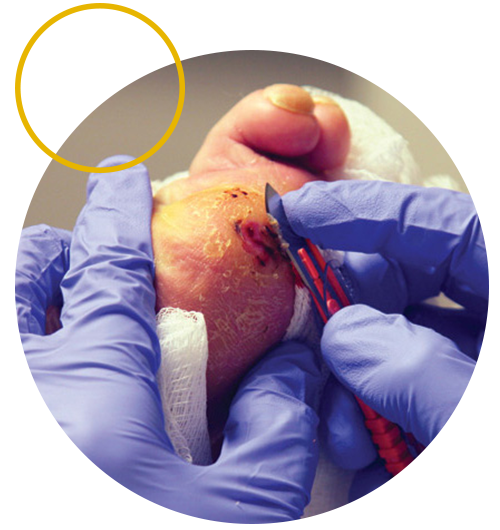
Debridement is the removal of dead or infected skin tissue to help a wound heal. It’s also done to remove foreign material from tissue. The procedure is essential for wounds that aren’t getting better. Usually, these wounds are trapped in the first stage of healing. When bad tissue is removed, the wound can start the healing process. This treatment also allows for healthy tissue to grow, it minimises scarring and reduces the complication of infections. The type of debridement used would depend on the nature of the wound and the duration of the wound.
To promote healing, reduce risks of infection, and improve patients’ outcomes, a variety of debridement methods would be included in the treatment plan. By using more than one debridement method, the bed or site of the wound can be prepared well for healing.
Mechanical debridement is carried out by irrigation, hydrotherapy, wet-to-dry dressings, and an abraded technique. The doctor may use a scalpel, scissors and forceps to remove biofilm and devitalised tissue.
Debridement is typically carried out in the first stage of wound healing, but this is may have to be done in other stages if necessary to promote the growth of health cell tissue. It is a vital element in wound healing and would be incorporated into the wound care plan.
After debridement there will be some pain and swelling around the wound, but this would improve within a few days. You may have a bandage or a moist dressing over your wound and you will be told how long to keep it or how often to change it.
If you or the person you are caring for has a diabetic foot wound or ulcer that is open and is having difficulty healing, you can come in for an assessment.

Make An Appointment by clicking here.

Assessment with our doctors who are specialists in wound healing.

Debridement would be incorporated into the wound care plan, typically in the first stage.

Follow-ups with home nursing option

Better quality of life with closing wound